What is the color of stars? The colors of stars can actually vary a lot. Typically, we can see white and red stars in the sky.
Contrary to popular belief that stars are white, they actually come in different colors such as blue, yellow, orange, and red.
The shimmering of stars in the celestial sphere is a mesmerizing and enigmatic phenomenon.
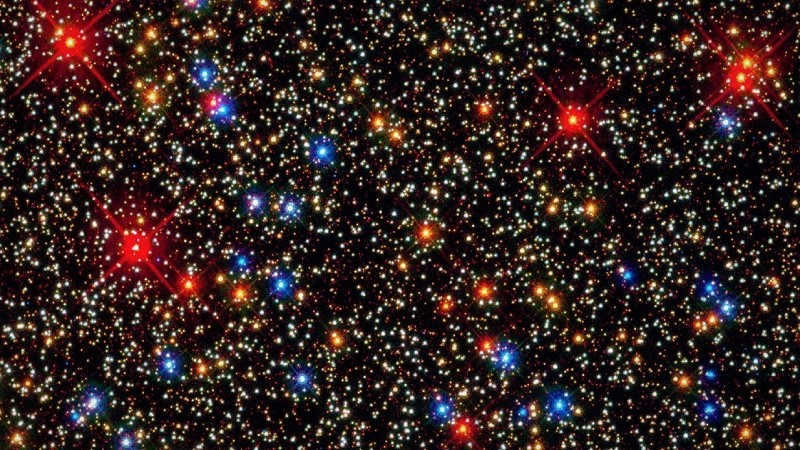
Explaining the different colors of stars
To begin with, the colors of stars appear distorted because of the Earth’s atmosphere.
Furthermore, our perception causes us to perceive the radiation of stellar bodies as white. This is primarily due to the physical capabilities of human beings, as the receptors in our retinas are responsible for color vision. In low light conditions, we are more sensitive to weaker impulses.
Interestingly, the diverse colors of stars are not primarily determined by their composition, but rather by their temperature. Heating causes certain elements to become ionized, resulting in their hidden presence.
Astronomers use spectral analysis to determine the composition and temperature of objects. This is done by examining the unique bandwidths of atoms in different substances. Certain substances allow certain light waves to pass through them easily, while others do not. By analyzing the light that passes through an object, scientists can determine its chemical composition.

Regardless, the variation in color spectrum is dependent on the surface temperature. It’s important to acknowledge that there is always a correlation between energy and emitted light in nature.
Essentially, the level of heating is influenced by the speed of molecular movement within a substance, which in turn affects the wavelength of light passing through it. In other words, when molecules move at a high speed, the surface becomes hotter, causing the wavelengths to shorten. Conversely, a colder medium is characterized by slower speeds and elongated wavelengths.
Interestingly, visible light is composed of different wavelengths, with shorter wavelengths appearing as blue shades and longer wavelengths as red shades. The color white is formed when different spectral rays overlap each other.
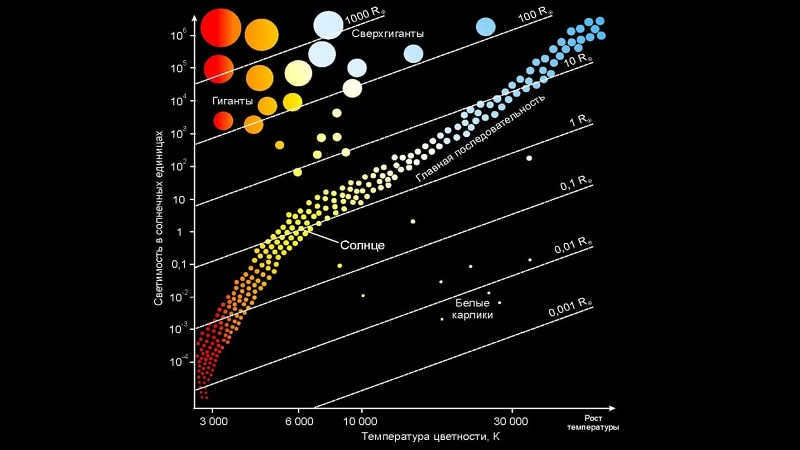
What is the color of frigid stars?
Actually, their surface temperature reaches 3000 degrees Celsius. Frigid stars tend to have a reddish hue, and they are commonly known as red giants.
What hue do the most scorching stars possess?
Interestingly, the hotter the celestial body, the closer it gets to blue in color. The temperature of these scorching stars can range from 10,000 to 30,000 degrees Celsius. Some even have temperatures around 100,000 degrees. These stars are considered the hottest blue stars and are often classified as giants.
Stars Classification by Color
First and foremost, stars are categorized based on their color, ranging from hottest to coldest. There are a total of 7 groups, each further divided into subcategories from 0 to 9.
Class O: Blue Stars
As previously mentioned, blue stars have the highest temperature, averaging around 300,000°C. They are believed to form from the merging of binary stars, resulting in a single, highly luminous and intensely heated star.
Examples of blue stars include Rigel, Tau of the Big Dog, Orion’s Zeta, and others. These stars are considered to be relatively rare in our Universe.
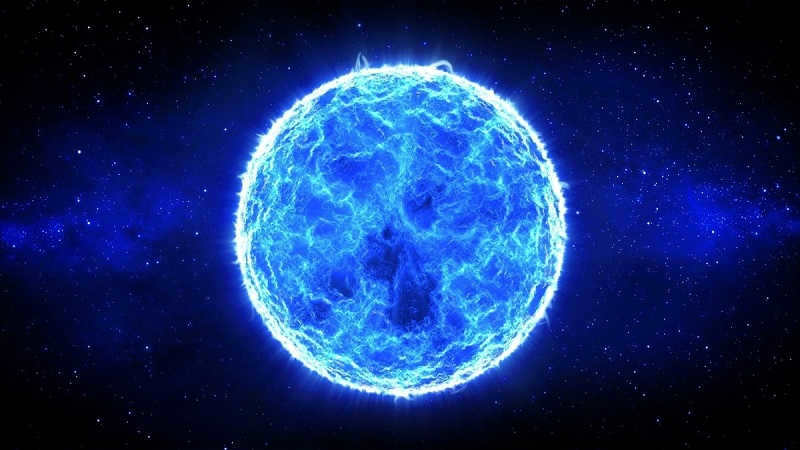
Group B: white and blue
The majority of these celestial objects are compact in size and their surface temperatures range from 7,000 to 200,000 degrees Celsius. This category consists of stars such as Altair, Vega, and Sirius.
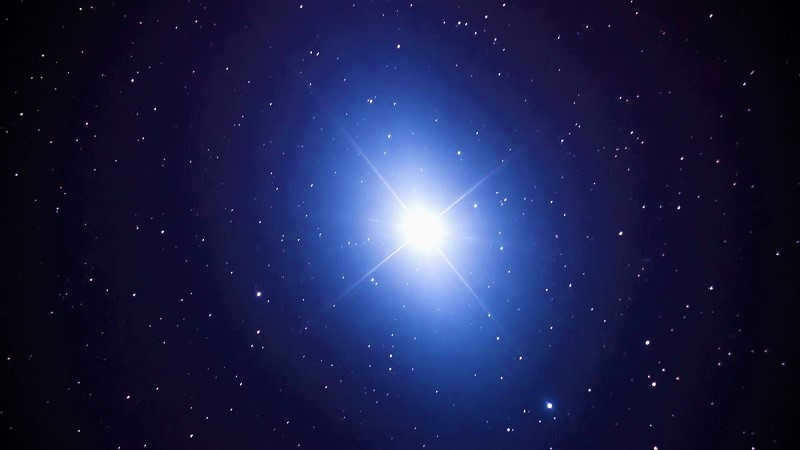
G class star in the yellow spectrum.
A star in the yellow spectrum has been discovered with a surface temperature of approximately 60000°C and a mass similar to that of the Sun (0.8-1.4).
Some notable examples include the celestial bodies Alhita, Dabich, Capella, and others. Additionally, our own Sun is a G2 dwarf star.
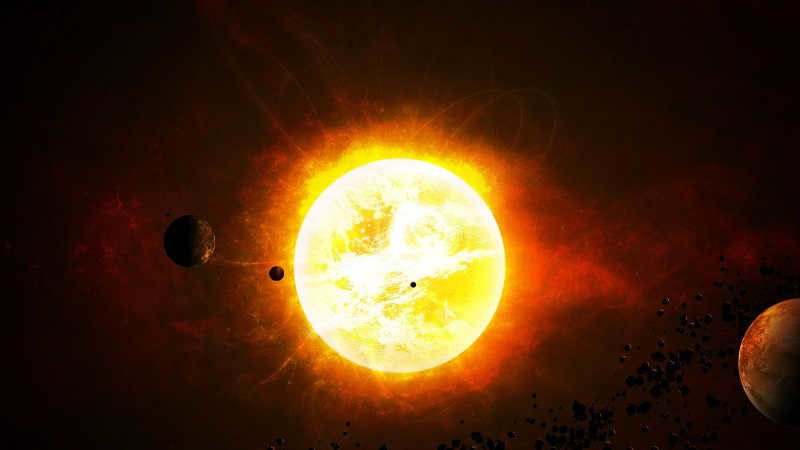
Orange dwarf stars of class K.
These stars stand out from the rest due to their temperature range of 4000 to 60000°C. A well-known example of an orange dwarf star is Aldebaran.
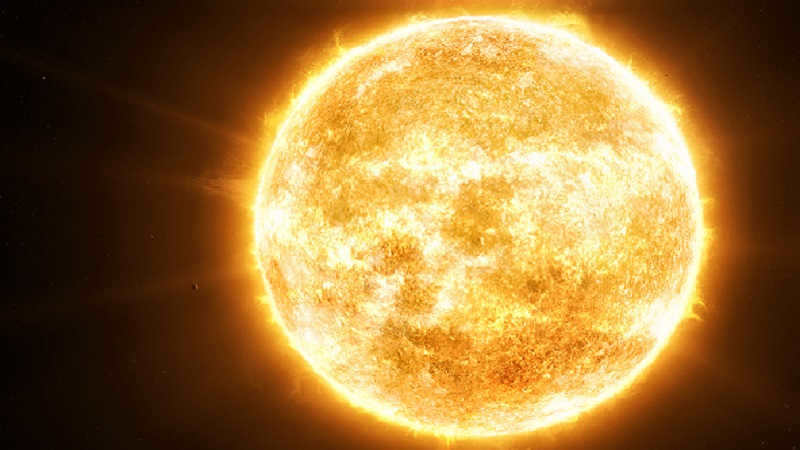
M class red stars
Unlike other stars, M class red stars do not have a surface temperature as high as 30,000 degrees Celsius. In addition, their outer shell contains a high amount of carbon. Many well-known stars fall into this category, such as Antares and Betelgeuse.
Interestingly, orange and red stars are the most abundant in the Universe.
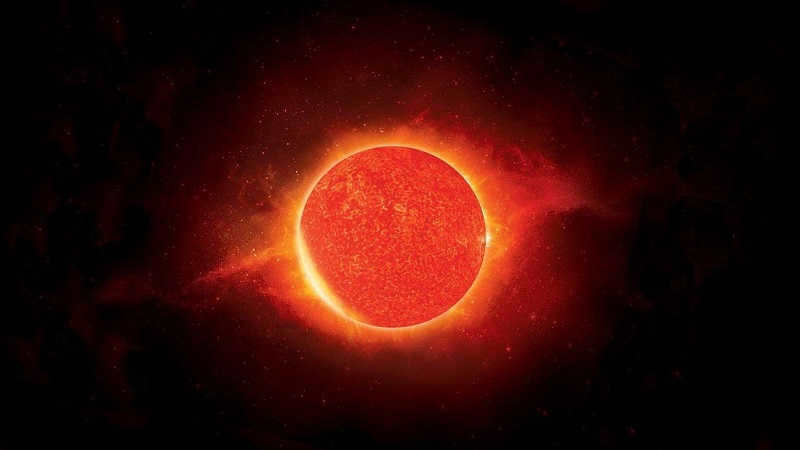
What are the different hues of stars?
On one side, the spectrum has a peak in a specific color. However, it is not always apparent in our observations. The light appears white to us, sometimes even reddish. Nevertheless, a thorough analysis of the intensity distribution of electromagnetic radiation reveals the true characteristics of celestial objects. Moreover, many telescopes nowadays enable us to differentiate them.
In addition, we have become adept at identifying other forms of radiation, which helps us understand various aspects of cosmic entities.
Take neutron luminaries, for instance, they have been discovered to emit X-rays. Additionally, there are bodies that appear green and violet, which we perceive as white and blue, respectively. However, these bodies cannot be detected without specialized equipment, as they can only exist in very close double systems.
Moreover, the color of stars, along with all of their characteristics, can undergo changes due to mutual influence, external conditions, and the stage of evolution. This means that all the processes occurring within stars in some way affect and alter their color. Furthermore, the visual distinction of these bodies also relies on the sensitivity of human eyes and individual perception.
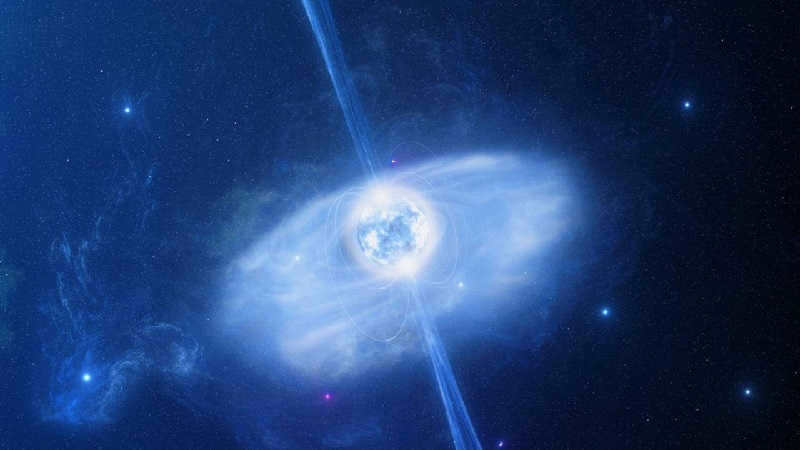
So, we have learned about the color of stars in the sky and the reasons for their variations. Now, let’s explore the color of Betelgeuse, for example.
It is important to remember that the apparent color of a star may not represent its true spectrum.
Contrary to popular belief, not all stars in the sky are white. (Except for the sun, which is, of course, yellow…but surprisingly, the reality is different. In fact, our Sun is almost white, and stars can be bluish, white, yellowish, orange, or even red!
One more inquiry is, is it possible to observe the color of stars without any visual aids?? Dim stars seem to have a white hue because they emit such low intensity light that it fails to stimulate the cones in the retina, which are the specialized cells responsible for perceiving colors. Due to their sensitivity to feeble light, the cones are unable to differentiate between different colors. Consequently, in the absence of sufficient light, all cats and stars appear to have a whitish appearance.
Shades of Radiant Stars
Let’s examine the Orion constellation, specifically focusing on its two most luminous stars, Rigel and Betelgeuse. (Orion is the prominent constellation visible during the winter season. It can be observed in the southern sky from late November to March.)
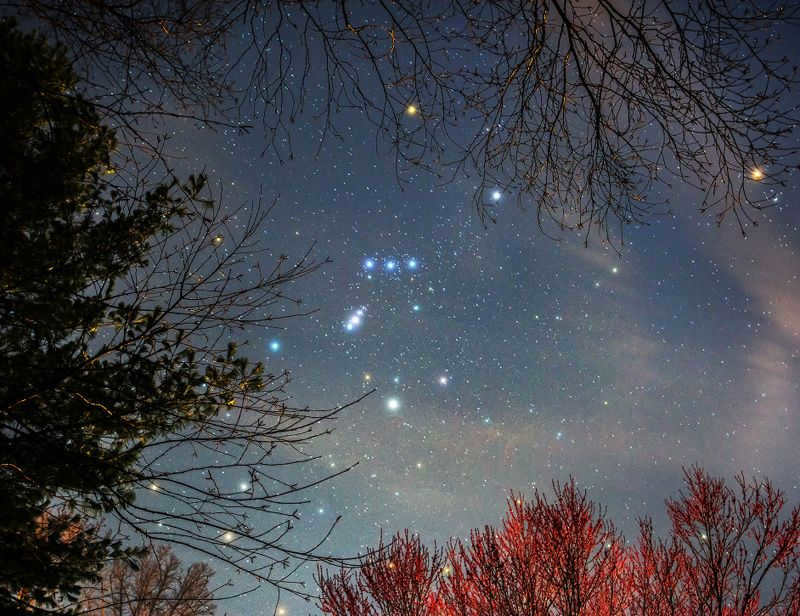
Among the stars in the Orion constellation, the star Betelgeuse stands out with its reddish hue, distinct from the others. The photo, taken by Bill Dickinson, captures this unique color.
Upon closer observation, it becomes clear that Betelgeuse appears red while Rigel shines in a bluish-white shade. This disparity in color is not an optical illusion; it is a result of the different temperatures on the surfaces of these stars. White stars have higher temperatures compared to yellow stars, and yellow stars are hotter than orange stars. The hottest stars emit a bluish-white hue while the coolest stars display a red color. Consequently, it can be concluded that Betelgeuse is significantly cooler than Rigel, as Rigel is much hotter.
Sometimes, however, the situation is not as evident. During a chilly or blustery evening, when the atmosphere is in turmoil, one can witness a peculiar phenomenon – Rigel undergoes rapid and frequent fluctuations in its luminosity (to put it simply, it flickers) and glows with assorted hues! At times, it appears to be blue, at other times it appears white, and for a brief moment, a touch of red emerges! It appears that Rigel is not truly a blue-white star – its actual color remains uncertain!
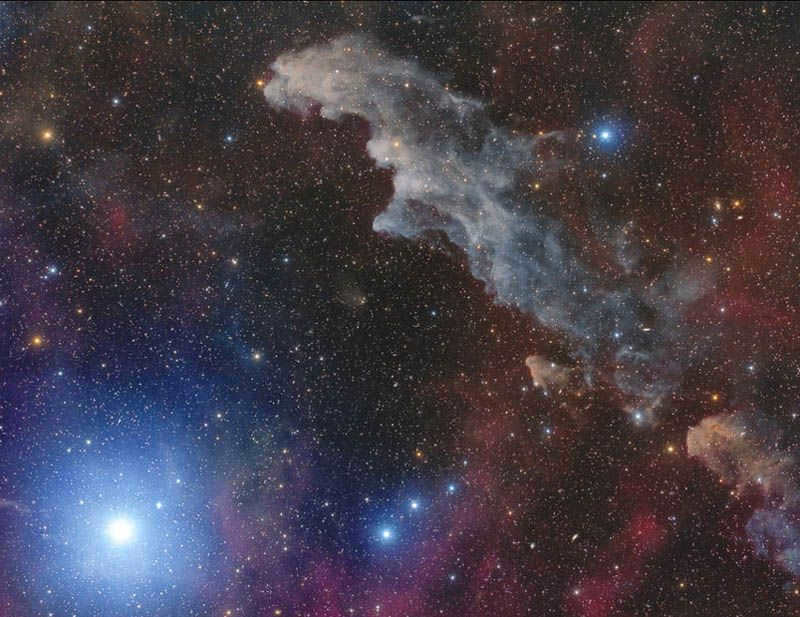
The reflection nebula known as the Witch’s Head and the blue-colored star Rigel create a captivating sight in the night sky. This mesmerizing phenomenon is caused by the Earth’s atmosphere, particularly when Rigel is positioned low on the horizon. Due to the thick atmosphere, stars near the horizon tend to twinkle and exhibit various colors. This is a result of the starlight passing through multiple layers of air with different temperatures and densities, causing it to refract and scatter. As a result, the stars appear to shimmer and undergo rapid color changes, creating a truly stunning spectacle.
The most remarkable illustration of a star shining with a variety of hues is a white star Sirius, which can be found in the vicinity of Orion in the sky. Sirius is the most brilliant star visible at night, thus its flickering and swift alteration of colors are particularly prominent compared to other stars.
While stars exhibit a range of colors, the unaided eye is most adept at differentiating between white and reddish stars. Out of all the prominent stars, perhaps only Vega appears distinctly blue.
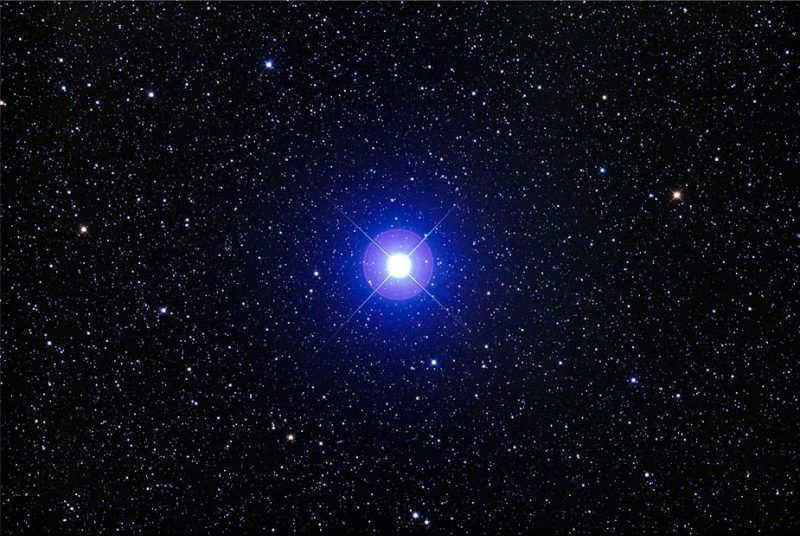
When observed through a telescope, Vega appears to have the color of a sapphire. The photo above, taken by Fred Espanak, captures the stunning beauty of this celestial gem.
Discovering the True Colors of Stars
Optical instruments such as telescopes and binoculars reveal a vast array of colors in the night sky. While we often associate stars with a white or yellow hue, the reality is much more vibrant. Through a telescope, you can witness stars shining in bright orange, yellow, bluish-white, yellowish-white, golden, and even greenish tones. But are these colors accurate representations of the stars?
Believe it or not, most of these colors are indeed real. However, it is important to note that there are no naturally occurring green stars in the universe. The greenish hues observed in certain stars are actually optical illusions, albeit incredibly beautiful ones. This phenomenon occurs when a yellow or yellowish-orange star is positioned close to a greenish star, creating the illusion of green coloration.
Observing multicolored stars is a fascinating experience that can be enjoyed with just the naked eye or enhanced with binoculars or a telescope. It is recommended to use the lowest magnification when observing through a telescope.
Displayed in the table below are the colors of 8 bright stars, along with their corresponding stellar magnitudes. If a star’s brilliance is indicated as “v,” it means that it is variable, and its brightness may fluctuate due to physical factors.
StarConstellationBrillianceColorEvening visibility
| Sirius | Canis Major | -1.44 | White, but often exhibits strong shimmering and various colors due to atmospheric conditions | Visible from November to March |
| Vega | Lyra | 0.03 | Blue | Visible all year round |
| Capella | Auriga | 0.08 | Yellow | Visible year-round |
| Rigel | Orion | 0.18 | Bluish-white, but often exhibits strong shimmering and various colors due to atmospheric conditions | Visible from November to April |
| Procyon | Canis Minor | 0.4 | White | Visible from November to May |
| Aldebaran | Taurus | 0.87 | Orange | Visible from October to April |
| Pollux | Gemini | 1.16 | Pale orange | Visible from November to June |
| Betelgeuse | Orion | 0.45v | Orange-red | Visible from November to April |
Multicolored stars illuminating the December sky
In the month of December, the night sky is adorned with a dazzling assortment of stars! We have previously discussed the vibrant red Betelgeuse and the luminous bluish-white Rigel. On particularly calm evenings, one cannot help but be captivated by the brilliance of Sirius, which shines with a pure white light. Another star worth mentioning is Capella, located in the constellation of Ascendant. Although it may appear almost white to the naked eye, when observed through a telescope, it unveils a distinct yellowish hue.
It is highly recommended to cast your gaze upon Vega, which can be seen in the evenings from August to December. Positioned high in the southern sky and later in the west, Vega is often referred to as the celestial sapphire due to its profound blue color when viewed through a telescope!
Lastly, let us not forget about Pollux, a star situated in the constellation Gemini. Its gentle glow emanates a pale orange hue, adding to the enchantment of the December sky.
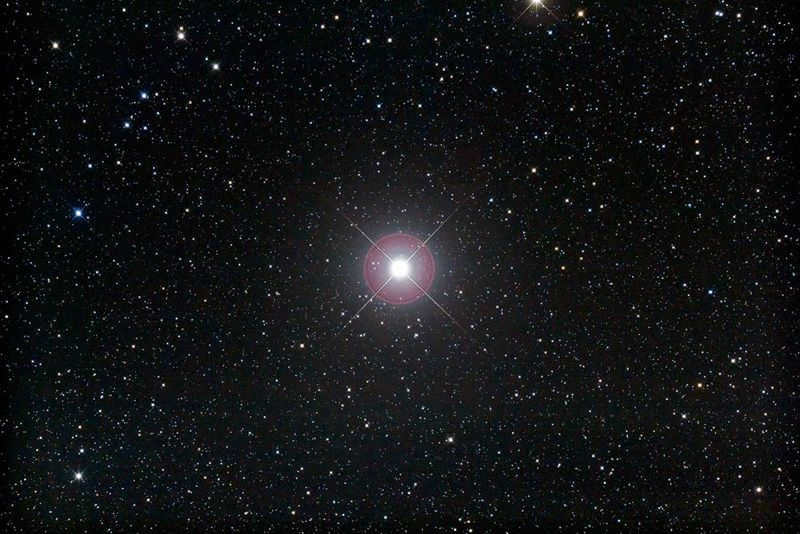
Pollux, which is situated in the Gemini constellation, is the most luminous star in the sky. Image credit: Fred Espanak
To conclude, it is worth mentioning that the perceived colors of stars are greatly influenced by the sensitivity of our eyes and our subjective perception. One might argue that Pollux appears to be a deep orange, while Betelgeuse has a yellowish-red hue. Why not conduct an experiment yourself? Observe these stars firsthand – both with the naked eye and through an optical instrument. Then, provide your own assessment of their colors!
When you gaze at the starry sky on a night without a moon, you might observe that the most brilliant stars display various colors. In the spring or summer sky, take a look at Arcturus and Vega. It’s clear that the former star possesses a reddish hue, while the latter shines with a bluish-white light. During the winter season, direct your attention to Betelgeuse or Aldebaran – both stars boast a distinctive golden orange shade. When you use binoculars or a small telescope to observe the sky, the contrast in star colors becomes even more apparent. In certain star clusters, you can witness orange, yellow, white, and blue stars situated next to one another. However, you will not come across any green stars amidst them. This brings up the question: do such stars actually exist? If not, what is the reason behind the absence of green stars?
What is the reason for the variety of colors in stars?
The difference in color among stars is due to the varying wavelengths of light that they emit. According to astrophysicists, stars emit light across a broad range of electromagnetic waves, including red, yellow, and green. It’s important to note that stars also emit light in ranges that are beyond human perception, such as ultraviolet and infrared light. Additionally, the intensity of the emitted light can vary between different wavelengths.
Now, let’s consider white light. As we learned from prism experiments in school, white light is composed of all the observable colors, ranging from violet to red, blended together in varying proportions.
Essentially, stars that are extremely hot are perceived as white by us due to their emission of light across the entire spectrum of colors. (The most scorching stars have a bluish-white hue.) As stars cool down, their color shifts towards the red end of the spectrum, resulting in an overall yellowish appearance. Finally, the coldest stars predominantly emit red and infrared light, which gives them a pale orange or golden orange tint.
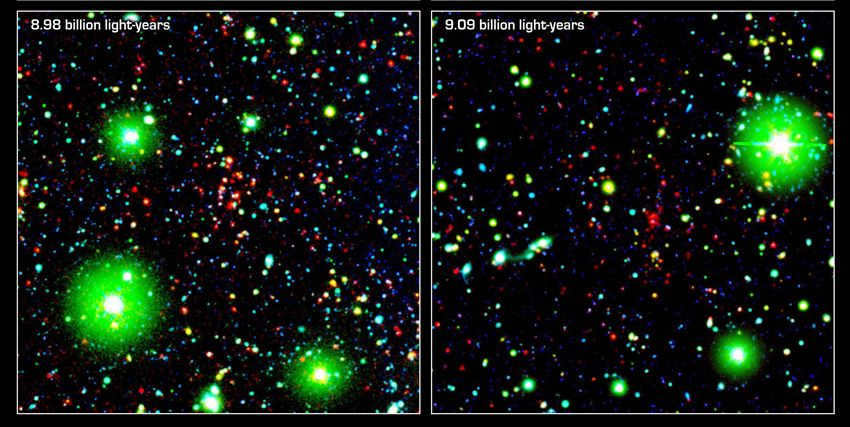
A photograph capturing a section of the night sky filled with countless galaxies located billions of light-years away from our planet Earth. The stars depicted in this image exhibit a mesmerizing shade of green. Interestingly, this particular photo was captured using the invisible infrared range of the electromagnetic spectrum, making it beyond the capability of the human eye to perceive. To enhance contrast and visual appeal, artificial colors were employed to paint the celestial objects within this captivating picture. Image credit: NASA/JPL-Caltech/S.A. Stanford (UC Davis/LLNL)
Why don’t green stars exist?
Based on theory and observations, stars with a surface temperature of approximately 6000° Kelvin emit the most green light. These stars are slightly hotter than the Sun, which has a temperature of about 5800K. However, these stars also emit significant amounts of light at other electromagnetic wavelengths, not just green light. Additionally, the presence of blue light counterbalances the red light, resulting in our eyes perceiving the star as almost white.
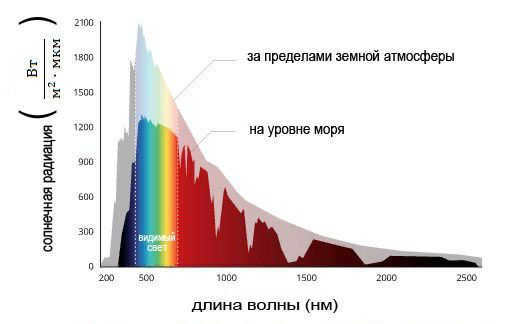
It’s important to keep in mind that color is a product of the observer’s brain. It is not an inherent quality of the star, but rather our interpretation of its emitted radiation. The receptors in our eyes are highly specialized, as is the processing (or synthesis) of color that occurs in the brain. As a result:
Unbelievable, but true: there are green stars!
When we say “green stars,” we don’t mean stars that are actually green. In fact, most green stars are hot luminaries that appear white or bluish-white. What sets them apart from other stars is that they exist in double or multiple systems.
Although these green stars are not visible to the naked eye, they are companions to bright stars that are yellow, orange, or reddish in color.
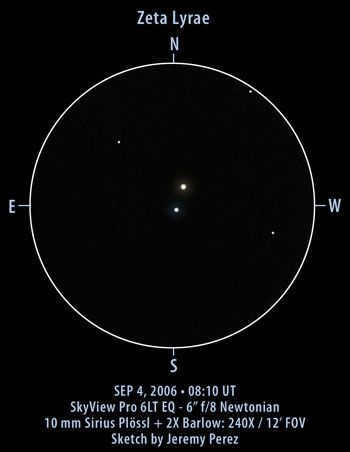
Lyra’s Zeta Lira, a binary star system in which the primary star has a yellowish hue and its companion appears pale green to many observers. Figure: Jeremy Perez
A classic illustration of this phenomenon is the binary star Antares, also known as the alpha star of the Scorpius constellation. The primary star is a radiant golden-orange color, while its companion is a fainter star located about 2.5 angular seconds away. Due to the intense brightness of Antares, it can be challenging to distinguish the two stars with an amateur telescope. However, those who have succeeded in doing so have often been amazed by the companion star’s striking emerald green color.
Another instance of this can be seen in the binary star Alamac, also known as gamma star of the Andromeda constellation. When observed through a telescope at low magnification, a secondary star can be discerned near the main golden yellow star. Different observers have interpreted the color of the primary star as greenish, blue, or indigo.
In both instances, the strong contrast between the primary star and its companion creates the perception of a greenish hue. This phenomenon is one of the factors that make double and multiple stars highly esteemed among astronomy enthusiasts.
For a compilation of fascinating “green” stars, refer to this list.
Furthermore, there is a captivating video featuring Andrei Shchetnikov from Novosibirsk Akademgorodok, providing an explanation.
There are countless stars scattered across the vast expanse of the universe. Each one possesses its own distinct qualities, including its color. Throughout the ages, the question of “What color are the stars?” has been pondered.
Thus, this article aims to shed light on the colors of stars, providing insight into how they are determined and exploring the impact of color on their characteristics.
Stars: A Kaleidoscope of Colors
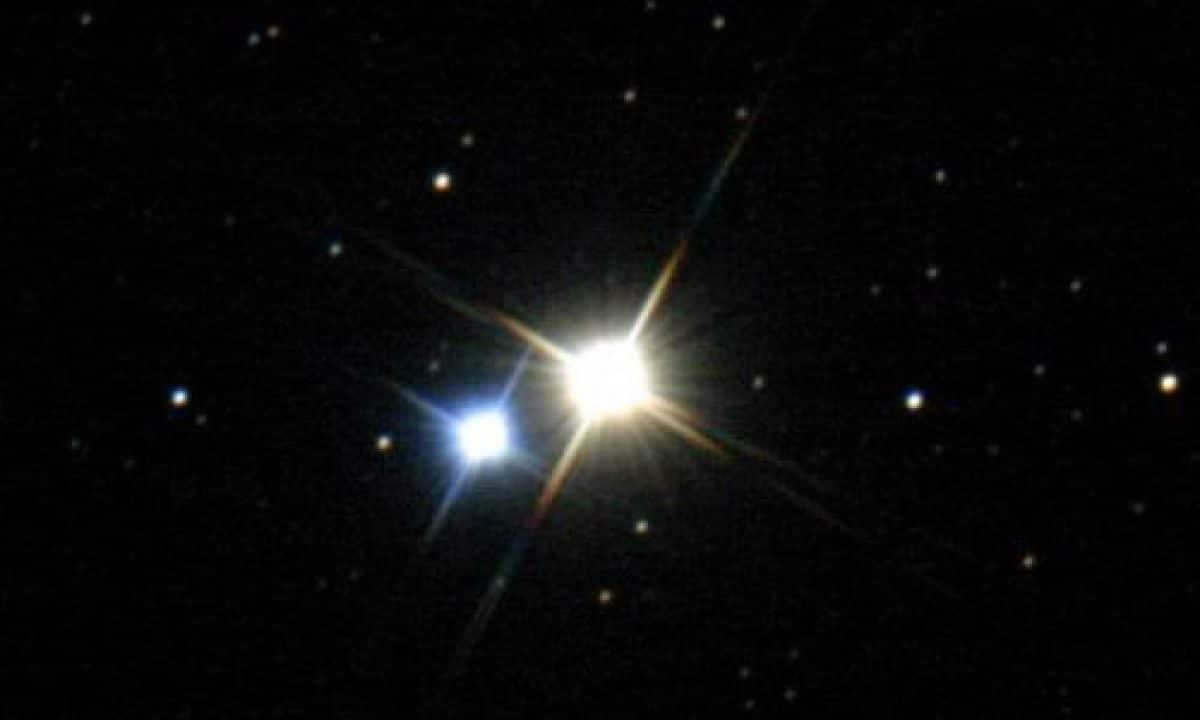
In the vast expanse of the sky, there are countless celestial bodies that captivate our gaze, with each one possessing a distinct luminosity contingent upon its size, “age,” or proximity to our earthly realm. However, when we observe these stars up close or through the lens of a telescope, we discover that they also exhibit a diverse array of colors and hues, ranging from fiery red to vibrant blue. Thus, we encounter stars that are bluer in appearance or stars that emanate a redder glow. A prime example of this celestial phenomenon can be found in the awe-inspiring Antares, whose name fittingly translates to “Rival of Mars,” as it vies for attention with the intense crimson hues of the neighboring planet.
The temperature of a star’s surface is the main factor determining its color. Therefore, it may seem paradoxical that blue stars are actually the hottest, while red stars are the coolest (or rather, the least hot). However, this seeming contradiction can be easily explained by considering the electromagnetic spectrum that we learn about in school. According to this spectrum, ultraviolet light is much more powerful than infrared light. As a result, the color blue is associated with more intense and energetic radiation, which corresponds to higher temperatures.
As an illustration, in the field of astronomy, the color of stars varies based on their temperature and age. In the sky, we observe stars that are either blue and white or orange and red. Take, for instance, the Blue Star Bellatrix, which has a temperature surpassing 25,000 Kelvin. On the other hand, there are reddish stars like Betelgeuse, which can have temperatures as low as 2,000 K.
Stars are categorized based on their color
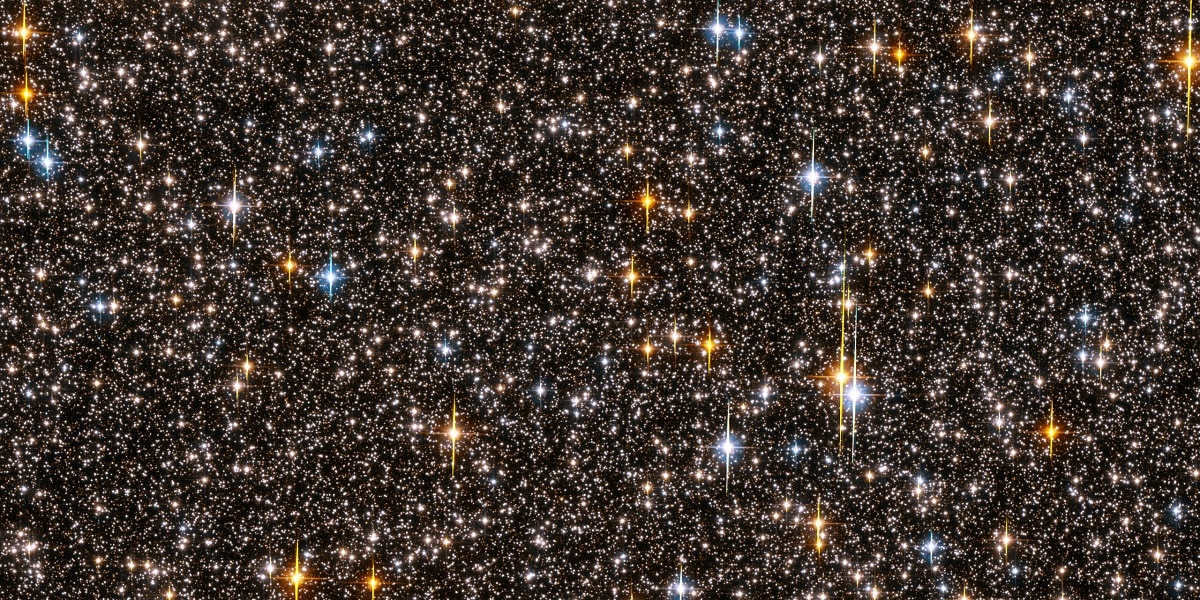
Stars in the field of astronomy are categorized into 7 distinct classes according to their size and color. These classes are designated with specific letters and further divided by numbers. For instance, the most youthful stars, which are the smallest and hottest, have a blue coloration and fall under the classification of O-type stars. Conversely, the most aged stars, which are the largest and coolest, are referred to as M-type stars. Our Sun, being similar in size to a medium-mass star, possesses a yellowish tone. It boasts a surface temperature ranging from 5000 to 6000 Kelvin, classifying it as a G2 star. As the Sun advances in age, it will gradually expand in size, cool down, and take on a reddish appearance. However, this transformation is still billions of years away.
The age of stars can be determined by observing their color
Observing the color of stars can provide us with valuable information about their age. Younger stars generally have a bluish color, while older stars tend to have a reddish hue. This color difference is a result of the energy production and temperature of the stars. Younger stars produce more energy and reach higher temperatures, giving them a bluer color. On the other hand, as stars age, they gradually lose energy and cool down, causing them to appear redder.
It is important to note that the relationship between age and color is not always consistent, as it depends on the size of the star. Larger, more massive stars burn through their fuel at a faster rate, causing them to turn redder in a shorter period of time. In contrast, smaller, less massive stars have a longer lifespan and take longer to develop a blue color.
Occasionally, we come across stars that are in close proximity to each other and display contrasting colors. Such is the scenario with the albino star in Swan constellation. At first glance, Albireo appears to be an ordinary star. However, when observed through a telescope or binoculars, it becomes apparent that it is actually a binary star with distinctly different hues. The primary star, Albireo A, shines in a vibrant yellow shade, while its companion, Albireo B, emits a stunning blue glow. Undoubtedly, this celestial duo stands out as one of the most breathtaking and prominent double stars.
blink or wink
In the world of eye movements, we have two distinct actions – blinking and winking. Both involve the closing and opening of the eyelids, but they differ in their purpose and execution.
Blinking is a natural and involuntary reflex that helps to keep the eyes lubricated and protected. It occurs frequently throughout the day, with an average person blinking around 15-20 times per minute. Blinking is a simultaneous movement of both eyes, and it is essential for maintaining healthy vision.
On the other hand, winking is a deliberate and voluntary action that involves the closing and opening of one eye. Winking is often used as a nonverbal communication tool, conveying emotions, intentions, or secret messages. It can be a playful gesture, a sign of flirtation, or a way to express a shared understanding.
While blinking is essential for eye health, winking adds a touch of intrigue and mystery to our interactions. Whether you blink or wink, your eyes have a unique way of expressing yourself and connecting with others. So, next time you blink or wink, think about the messages you’re sending and the impact they can have.
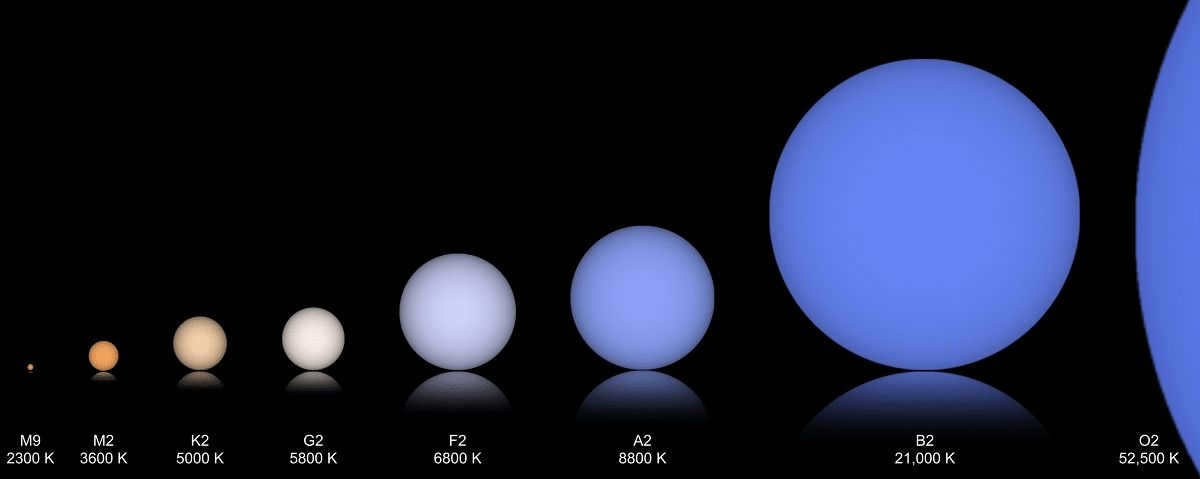
Sirius, located in the northern hemisphere, is renowned for its brightness, particularly during the winter months. When Sirius is positioned near the horizon, it exhibits a captivating display of colors akin to festive lights. However, this mesmerizing phenomenon is not a result of the star itself, but rather a consequence of our atmosphere. The varying layers of air, each with its own temperature, within our atmosphere cause the light emitted by the star to undergo multiple refractions as it traverses through. Amateur astronomers refer to this occurrence as atmospheric turbulence, which consequently creates the illusion of stars “blinking”.
What is the duration of a star’s shine?
Stars have the ability to shine for an immense period of time, often lasting billions of years. However, like all things, their radiance eventually fades away. The fuel required for their nuclear reactions is finite and gradually depletes. When the star runs out of hydrogen to burn, helium fusion takes over, but this process is far more energetic. As a result, the star expands, stretching thousands of times larger than its original size, ultimately transforming into a colossal entity. This expansion also causes the star to lose heat from its surface and necessitates the distribution of energy over a wider area, resulting in a red hue. The only exception to this phenomenon is a group of red giant stars, famously referred to as the belt of giant stars.
Red giants have a short lifespan and rapidly deplete their remaining fuel. When this occurs, the star’s nuclear reactions no longer have enough fuel to sustain it: gravity exerts a force on the entire surface of the star, causing it to collapse and become a white dwarf. Due to this intense compression, energy becomes concentrated and the surface temperature increases, resulting in a change in color to white. White dwarfs are the remnants of stars. These stellar remnants deviate from main-sequence stars.
By understanding this information, you can gain further insight into the colors of stars and their implications.
This article adheres to our editorial standards and guidelines. To report any inaccuracies, please click here.
Full Article Summary: Network Meteorology ” astronomy ” What are the colors of stars
When you gaze at the sky on a clear night, you may notice numerous stars shining in various colors. Have you ever pondered about the factors that influence the shade of their twinkling and the specific hues of these celestial bodies?
The color of a star is primarily determined by the temperature of its surface. The vast expanse of stars resembles a collection of precious gems, each exhibiting a unique and captivating shade, akin to a magical palette utilized by an artist. As the temperature of an object increases, so does the energy of radiation emitted from its surface, resulting in shorter wavelengths.
Even a slight variation in wavelength can significantly alter the perceived color by the human eye. The longest wavelengths manifest as a red hue, which gradually transitions to orange, yellow, then white, ultimately culminating in a white-blue shade.
The gas envelope of luminaries serves as a perfect emitter. The age and surface temperature of a star can be determined by its color. Naturally, the shade is not determined visually, but rather with the assistance of a specialized instrument called a spectrograph.
The analysis of stellar spectra is the bedrock of modern astrophysics. The colors of celestial luminaries often provide us with the sole available information about them.
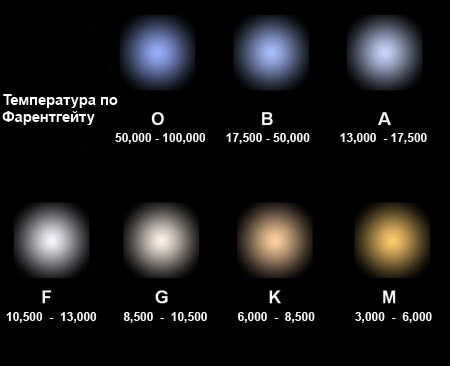
Blue stars
The largest and hottest stars are the ones that appear blue in color. The temperature of their outer layers averages around 10000 Kelvin, but can reach as high as 40000 Kelvin for certain stellar giants.
When stars are just starting their journey, they emit light in the blue range. For instance, Rigel, which is one of the two primary stars in the Orion constellation, has a bluish-white hue.
The Sun, the central body of our solar system, has a surface temperature exceeding 6000 Kelvin. When observed from space, it and other similar celestial objects appear brilliantly white, but from Earth, they take on a more yellowish hue. Gold stars possess an average age.
Among the other celestial bodies known to us, the star Sirius is also white, although its color is difficult to discern with the naked eye. This is due to its low position above the horizon, which causes its radiation to undergo significant distortion from multiple refractions. At mid-latitudes, Sirius, often seen twinkling, is capable of displaying the entire spectrum of colors in just half a second!
Red stars
Red dwarfs, which have masses less than 7.5% of the Sun’s, are low-temperature stars with a dark reddish hue. Their temperature is below 3500 Kelvin, and although they emit a rich shimmer of many colors and shades, we perceive their glow as red.
Old and cooling stars, including giant luminaries whose hydrogen fuel has been depleted, also exhibit a red or even brownish hue. This range of the spectrum is generally associated with the radiation of these stars.
The second major star in the constellation of Orion, Betelgeuse, stands out with its distinct red hue, as does Aldebaran, which appears orange in color, just to the right and above it on a sky map.





